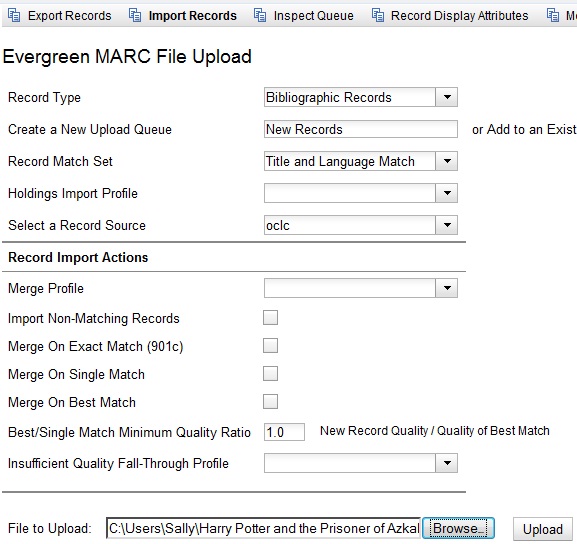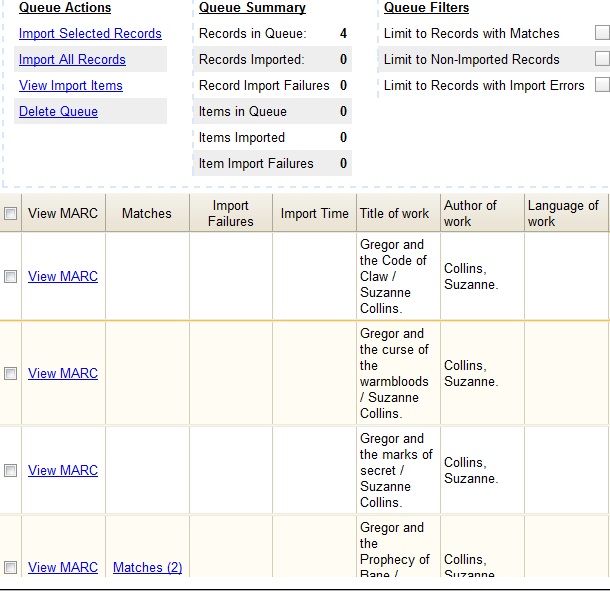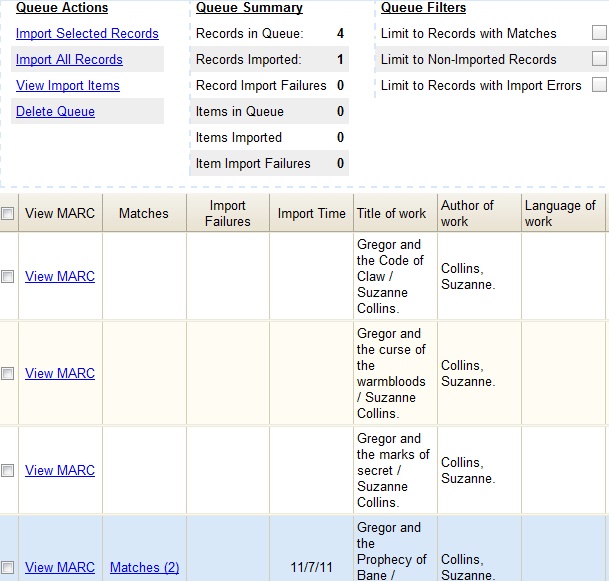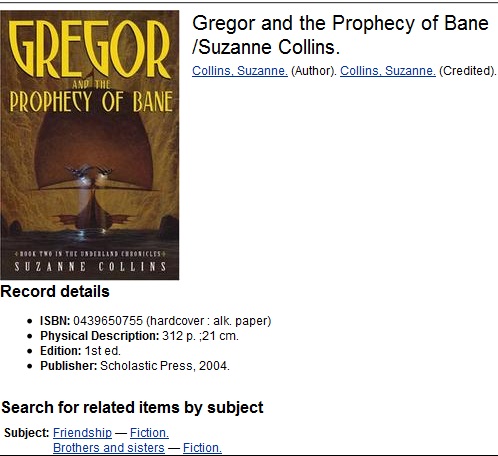 |  | |
| HomePrev | Chapter 54. Batch Importing MARC Records | Next |
|---|---|---|
The Import Records interface incorporates record match sets, quality metrics, more merging options, and improved ways to manage your queue. In this example, we will import a batch of records. One of the records in the queue will contain a matching record in the catalog that is of lower quality than the incoming record. We will import the record according to the guidelines set by our record match set, quality metrics, and merge/overlay choices that we will select.
1) Select a Record Type from the drop down menu.
2) Create a queue to which you can upload your records, or add you records to an existing queue. Queues are linked to match sets and a holdings import profile. You cannot change a holdings import or record match set for a queue.
3) Select a Record Match Set from the drop down menu.
4) Select a Holdings Import Profile if you want to import holdings that are attached to your records.
5) Select a Record Source from the drop down menu.
6) Select a Merge Profile. Merge profiles enable you to specify which tags should be removed or preserved in incoming records.
7) Choose one of the following import options if you want to auto-import records:
Quality ratio affects only the Merge on Single Match and Merge on Best Match options.
8) Enter a Best/Single Match Minimum Quality Ratio. Divide the incoming record quality score by the record quality score of the best match that might exist in the catalog. By default, Evergreen will assign any record a quality score of 1 (one). If you want to ensure that the inbound record is only imported when it has a higher quality than the best match, then you must enter a ratio that is higher than 1. For example, if you want the incoming record to have twice the quality of an existing record, then you should enter a 2 (two) in this field. If you want to bypass all quality restraints, enter a 0 (zero) in this field.
9) Select an Insufficient Quality Fall-Through Profile if desired. This field enables you to indicate that if the inbound record does not meet the configured quality standards, then you may still import the record using an alternate merge profile. This field is typically used for selecting a merge profile that allows the user to import holdings attached to a lower quality record without replacing the existing (target) record with the incoming record. This field is optional.
10) Browse to find the appropriate file, and click Upload. The files will be uploaded to a queue.

11) The screen will display records that have been uploaded to your queue.

12) If Evergreen indicates that matching records exist, then click the Matches link to view the matching records. Check the box adjacent to the existing record that you want to merge with the incoming record.

13) Click Back to Import Queue.
14) Check the boxes of the records that you want to import, and click Import Selected Records, or click Import All Records.
15) A pop up window will offer you the same import choices that were present on the Import Records screen. You can choose one of the import options, or click Import.

16) The screen will refresh. The Queue Summary indicates that the record was imported. The Import Time column records the date that the record was imported.

17) Search the catalog to confirm that the record was imported.
